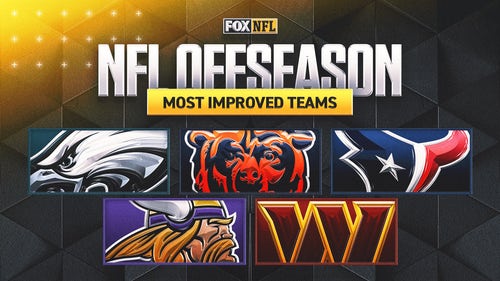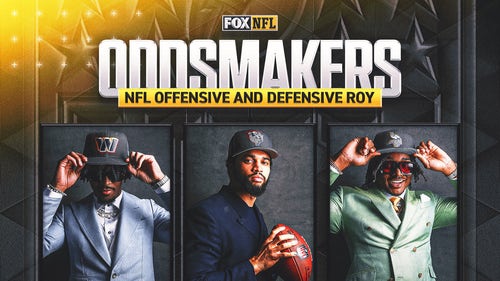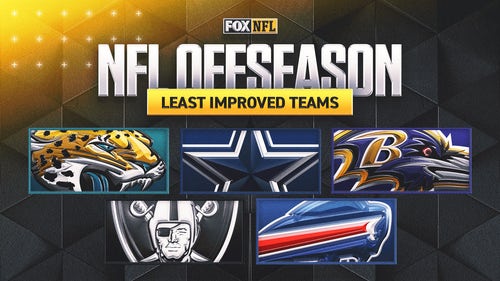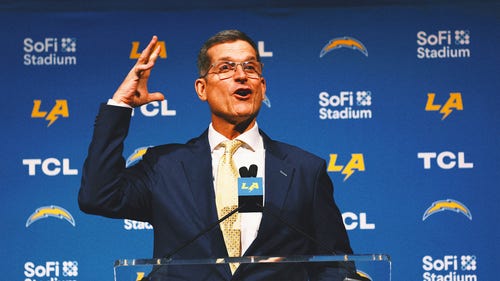
Payton, Brees read, adjust on the fly
Each week, Chad Pennington breaks down a dynamic NFL playmaker or scheme, devises a game plan and discusses a strategy for success. This week, Pennington delves into the symbiosis of Saints coach Sean Payton and quarterback Drew Brees, and how their relationship will allow them to adjust to the New York Giants’ unique “big nickel” defense.
So much can be learned in a decade. Experience is the best teacher.
I’m no different than the next person. Throughout my 11-year NFL career, there were so many things I learned about the game of football, professional sports, business — the list goes on and on. One thing is for certain: Relationships play a major role in the success or failure of an organization.
In the NFL, the most important relationship consists of the head coach and his quarterback. Few teams (though there have been some) can be successful with a volatile head coach-quarterback relationship.
Typically, a head coach and his quarterback must work together, present the same message and have each other’s backs. One team that has thrived on this type of relationship is New Orleans. Since 2006, Sean Payton and Drew Brees have personified the coach-quarterback dynamic. Brees and Payton share the same goals and a common purpose.
No. I’m not blind to the fact that winning helps. There is certainly no question that winning cures numerous ailments in the NFL. But I had the opportunity to speak with these two competitors before the Saints beat the Jacksonville Jaguars in Week 4. Two words explain why New Orleans has experienced, since 2006, the most success in team history: Payton and Brees.
When watching the Saints’ offense, you can see their relationship unfold before your eyes. Payton is a smart guy. He learned early from one of his mentors, Bill Parcells: Pay attention to the game! Call offensive plays according to what is happening on the field.
You will never see Payton have a stubborn mind-set. He knows the opposing staff prepares, too. You must make adjustments on the run and use all parts of your game plan. This is where Brees comes in. Payton trusts his quarterback to see the game as he sees it. He will call risky plays only because he knows Brees will cover for him if it unfolds differently. And you think relationships aren’t important?
And so, my assignment this week: Game plan for the NFC South division-leading Saints — led by the NFL’s top-rated offense — against the New York Giants defense on Monday night. I seriously doubt they need my help, but here goes nothing!
Looking at the Giants, who had been on a roll, a few statistics stand out. The overall numbers won’t impress you. The G-men are ranked 21st in total defense, surrendering 22.8 points and 362 yards per game. However, the Giants are tied for first with 31 sacks and also have 14 interceptions and eight fumble recoveries. As a matter of fact, New York has had a takeaway in 25 straight games. The disruption caused by the pass rush along with the takeaways creates opportunities for the Giants’ defense to get the ball back to their offense.
The Giants are coming off two tough losses, the latest being to the Philadelphia Eagles and backup QB Vince Young. Fans often fail to realize the fine line between winning and losing. All it takes is for one part of your team to play poorly, and you find yourself in the loss column. That’s what happened in the Philly game. The Giants' defense played winning football, surrendering only 17 points, but the offense failed to complement the defensive effort. Because of parity in talent across the NFL, all three phases of the football team must have at least “par performances” for a team to have a chance to win.
A unique wrinkle in the Giants’ scheme can be found in the front seven. In base defense, New York will employ a “big nickel” package instead of a typical three-linebacker set to accompany the four down linemen. A normal “nickel” package consists of five defensive backs, and the fifth defender is a corner. However, the term “big nickel” refers to using a third safety as the fifth defensive back.
This concept allows the Giants to be better in pass defense against base offenses who have exceptional tight ends. It also provides a stronger presence to defend the run with a safety instead of a smaller corner. Safety Antrel Rolle plays the “third linebacker” position in this package. Rolle, a former corner, is able to handle more coverage responsibilities compared to a linebacker and provide a decent presence in the run game, as well.
For the Saints, Payton will devise multiple packages that take advantage of each individual skill player on his offense. Each of the wide receivers will have specific plays. Tight end Jimmy Graham and running back Darren Sproles will have packages. Then, Payton will still find a way to involve running backs Pierre Thomas and Mark Ingram.
It can be an issue getting everybody involved, but it’s a nice problem to have. Why? Brees is an equal-opportunity quarterback. He spreads the ball around and rarely locks in on one specific receiver. Remember that “relationship thing” we discussed earlier. These two guys work hand in hand.
I would attack the Giants with formations. Graham presents matchup problems. Put him in various positions, not just the typical tight end alignment. Align him outside of the receivers or on the backside of the formation by himself. Now, the Giants must make a decision.
If they decide to play man defense, the Saints have the advantage with Graham on a safety. In man coverage, the corners will match the receivers while the safeties and linebackers will cover the tight ends and running backs.
If New York plays zone defense, the Saints’ wide receivers will be working against linebackers and safeties. In zone coverage, the corners will stay on the outside covering Graham while the inside coverage consists of safeties and linebackers. Advantage, Saints.
I also believe there are plays to be made in the middle of the field. The Giants like to play man or zone coverage with one safety in the middle of the field. Against man coverage, there can be holes in the middle because the linebackers have left to cover the running backs. Shallow crossing routes and intermediate in-breaking routes have been effective. The Eagles’ Steve Smith scored the first touchdown on a shallow crossing route Sunday night. In Week 9, Tom Brady had success finding Wes Welker and Rob Gronkowski on deeper, in-breaking routes in the middle of the field.
Because of the Giants’ excellent pass rush, screens will also be in my game plan. The Saints are really good at implementing screens. With nifty runners such as Sproles and Thomas, running-back screens from various formations can help slow the pass rush and put pressure on secondary defenders to tackle in space. Payton also will incorporate wide-receiver screens. These types of screens get the ball out quickly to such guys as Lance Moore, who can run after the catch. That’s another way to attack while avoiding sacks and interceptions.
Finally, I know Payton will build a package for Sproles. This guy is a football-playing machine. He defies all “combine” logic. Although small in stature, Sproles presents crazy matchup problems. Get Sproles matched up on linebackers from the conventional running-back alignment or by motioning him out of the backfield. He has an uncanny ability to get open. Sproles creates space with his quickness and runs routes with the “eyes” of the quarterback. Rarely does he fool Brees with his decisions on option routes.
With all these packages, Payton will not be afraid to call anything on his play sheet. Take Week 4 against the Jaguars as the perfect example. They were ahead by 13 points late in the fourth quarter. While in the broadcast booth, I suggested that the Saints go into their four-minute package (two running backs and two tight ends) and run the ball to run out the clock. Instead, they came out in an empty formation — no backs in the backfield and five skill players split out as receivers.
What does this prove? Have I mentioned the “relationship-thing” yet?















































































































































